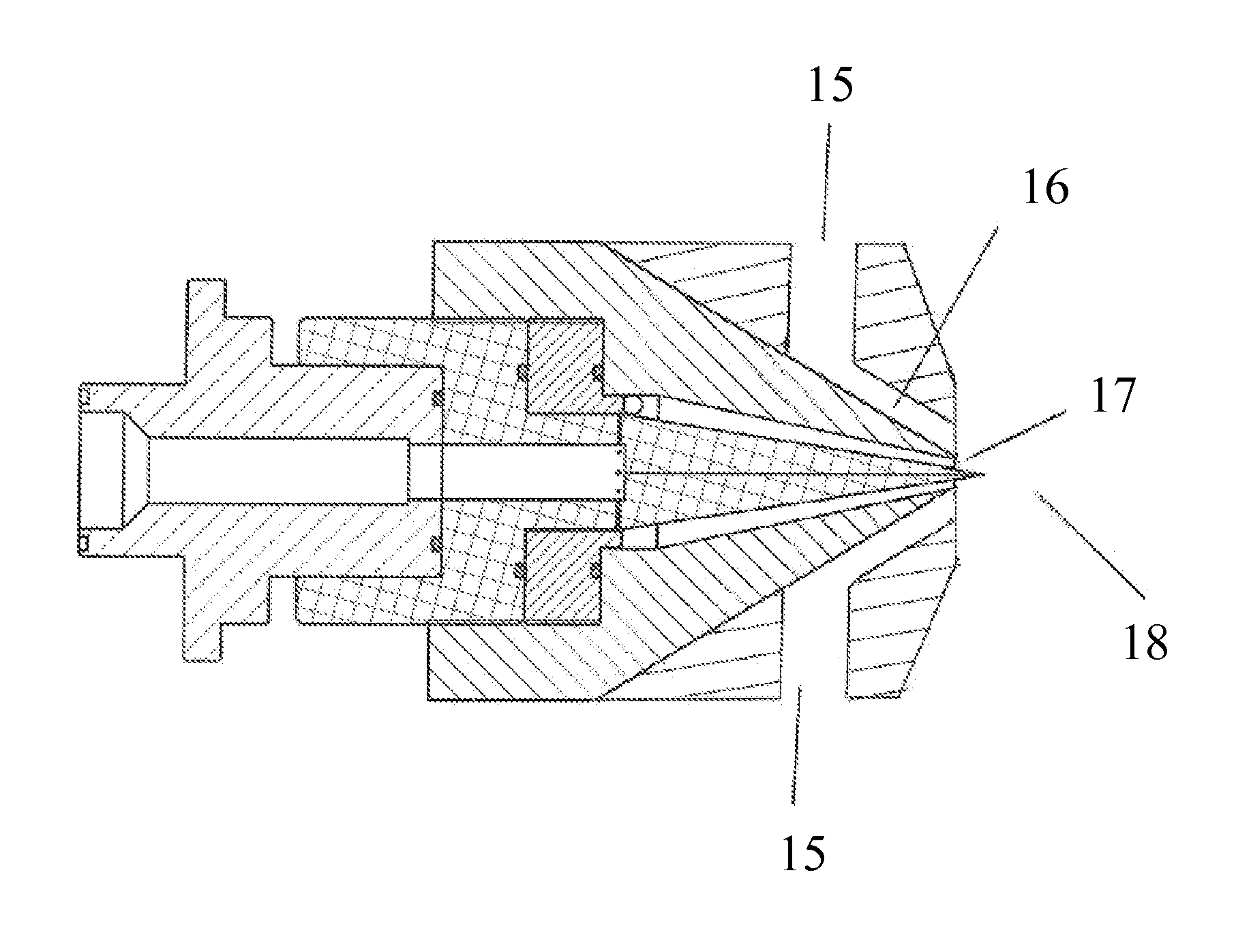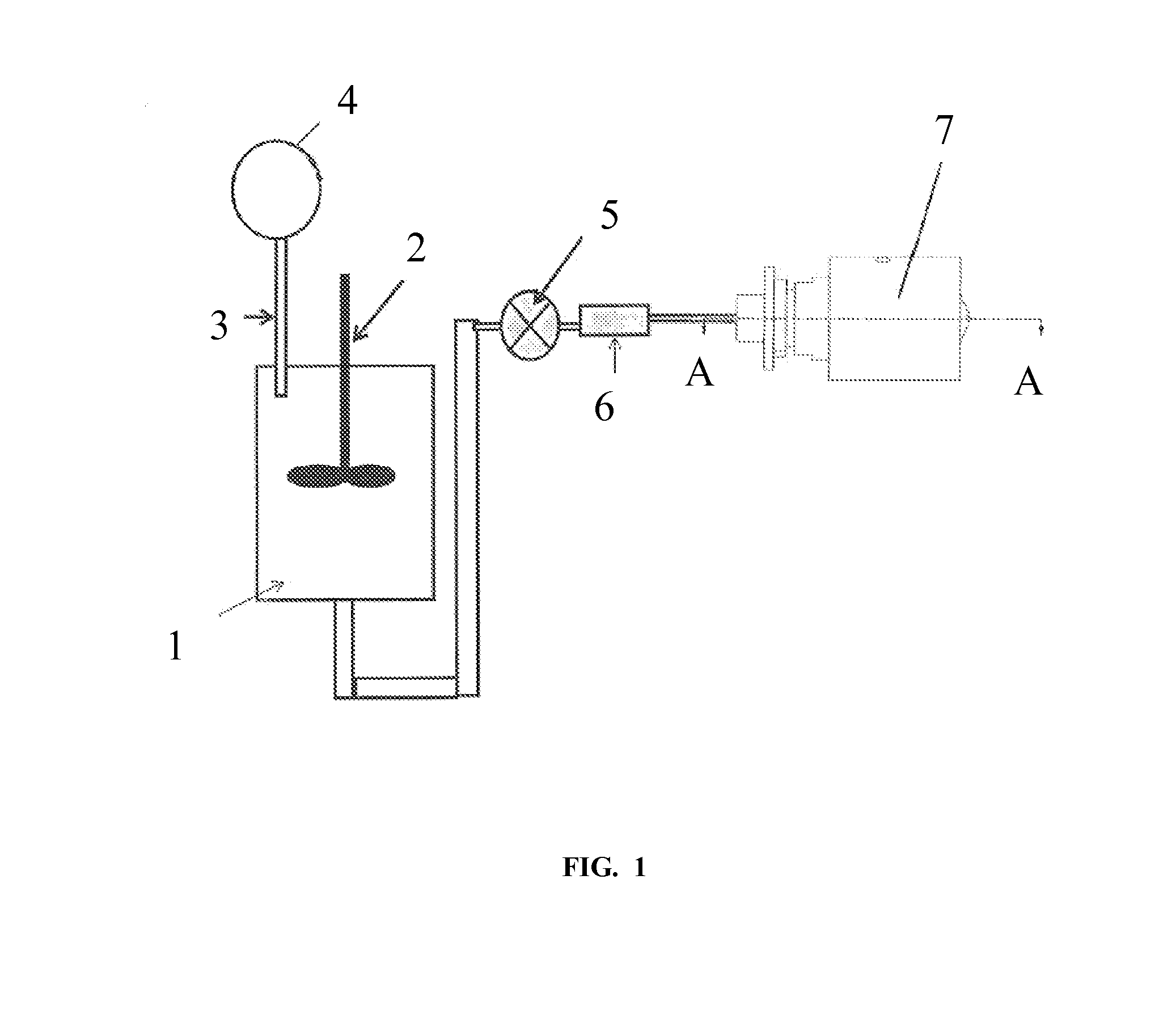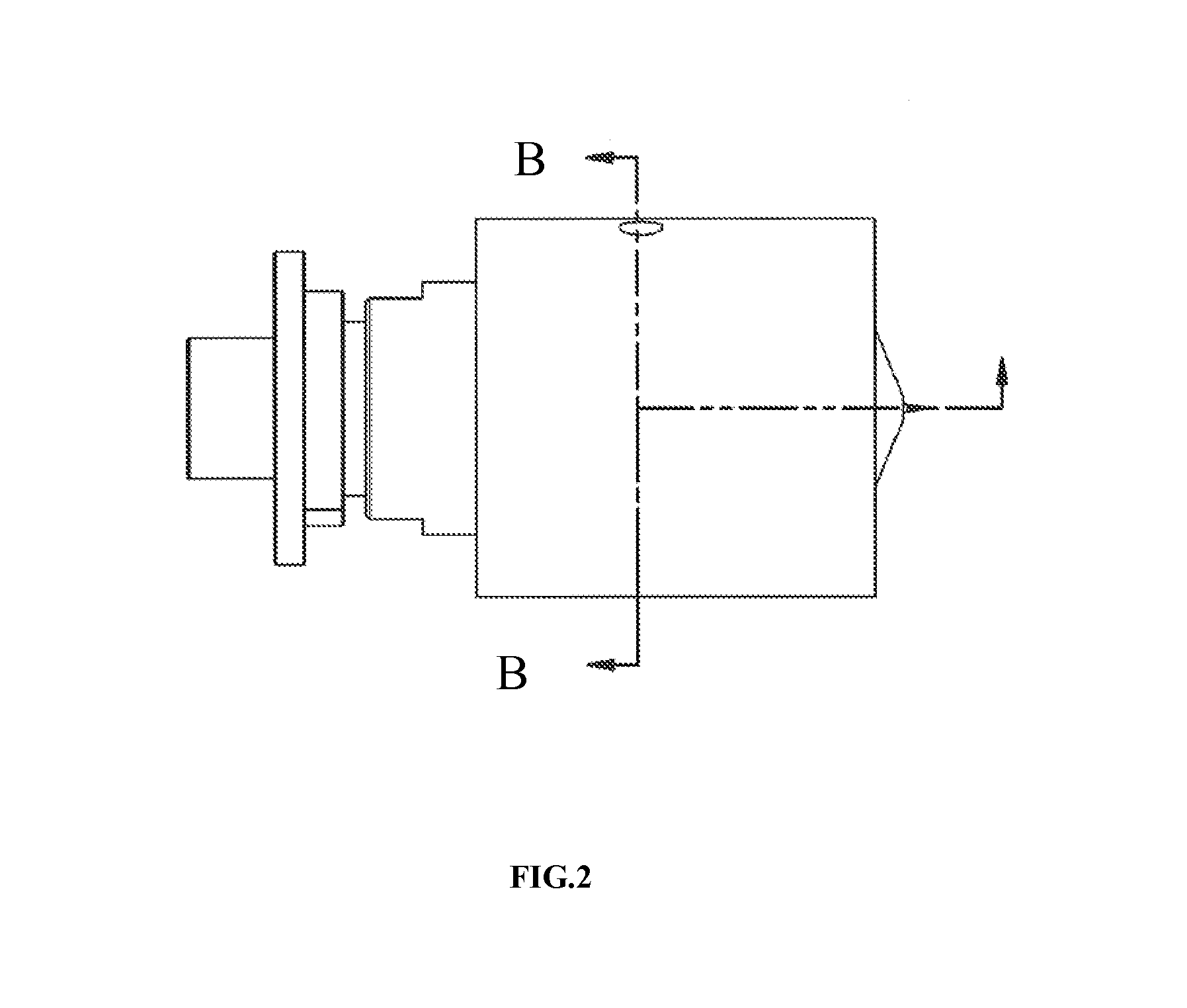Coform fibrous materials and method for making same
a technology of coform fibrous materials and coform fibrous layers, which is applied in the direction of artificial filament chemical after-treatment, spinnerette packs, other domestic articles, etc., can solve the problems of reducing the pliability and mechanical strength of the nanofiber layer, and reducing the pore size of the material. , to achieve the effect of increasing the pore size of the material, high surface area and high pore siz
- Summary
- Abstract
- Description
- Claims
- Application Information
AI Technical Summary
Benefits of technology
Problems solved by technology
Method used
Image
Examples
example 1
[0149]A stainless steel reactor vessel (volume=0.5 l) was charged with 70 g of Capa 6100 polycaprolactone polymer (Perstorp) and 30 g of Capa 6500 polycaprolactone polymer (Perstorp). The polymer mixture was heated to 140 C and pressurized to 25 psig. The heated and pressurized polymer was forced through a 140 micron rated filter and then into the two-phase nozzle. Heated air was injected into the two-phase chamber at 171 C and 40 psig. Fibers were produced at a rate of 0.014 g / min. A microscope picture of the fibers produced is shown in FIG. 9. The fiber size distribution is shown in FIG. 10.
example 2
[0150]A stainless steel reactor vessel (volume=0.5 l) was charged with 70 g of Capa 6100 polycaprolactone polymer (Perstorp) and 30 g of Capa 6500 polycaprolactone polymer (Perstorp). The polymer mixture was heated to 160 C and pressurized to 40 psig. The heated and pressurized polymer was forced through a 140 micron rated filter and then into the two-phase nozzle. Heated air was injected into the two-phase chamber at 181 C and 60 psig. Fibers were produced at a rate of 0.31 g / min. A microscope picture of the fibers produced is shown in FIG. 11. The fiber size distribution is shown in FIG. 12.
example 3
[0151]A stainless steel reactor vessel (volume=0.5 l) was charged with 70 g of Capa 6100 polycaprolactone polymer (Perstorp) and 30 g of Capa 6500 polycaprolactone polymer (Perstorp). The polymer mixture was heated to 156 C and pressurized to 40 psig. The heated and pressurized polymer was forced through a 140 micron rated filter and then into the two-phase nozzle. Heated air was injected into the two-phase chamber at 225 C and 60 psig. Fibers were produced at a rate of 0.014 g / min. A SEM of the fibers produced is shown in FIG. 13. The fiber size distribution is shown in FIG. 14.
PUM
 Login to View More
Login to View More Abstract
Description
Claims
Application Information
 Login to View More
Login to View More - R&D
- Intellectual Property
- Life Sciences
- Materials
- Tech Scout
- Unparalleled Data Quality
- Higher Quality Content
- 60% Fewer Hallucinations
Browse by: Latest US Patents, China's latest patents, Technical Efficacy Thesaurus, Application Domain, Technology Topic, Popular Technical Reports.
© 2025 PatSnap. All rights reserved.Legal|Privacy policy|Modern Slavery Act Transparency Statement|Sitemap|About US| Contact US: help@patsnap.com



